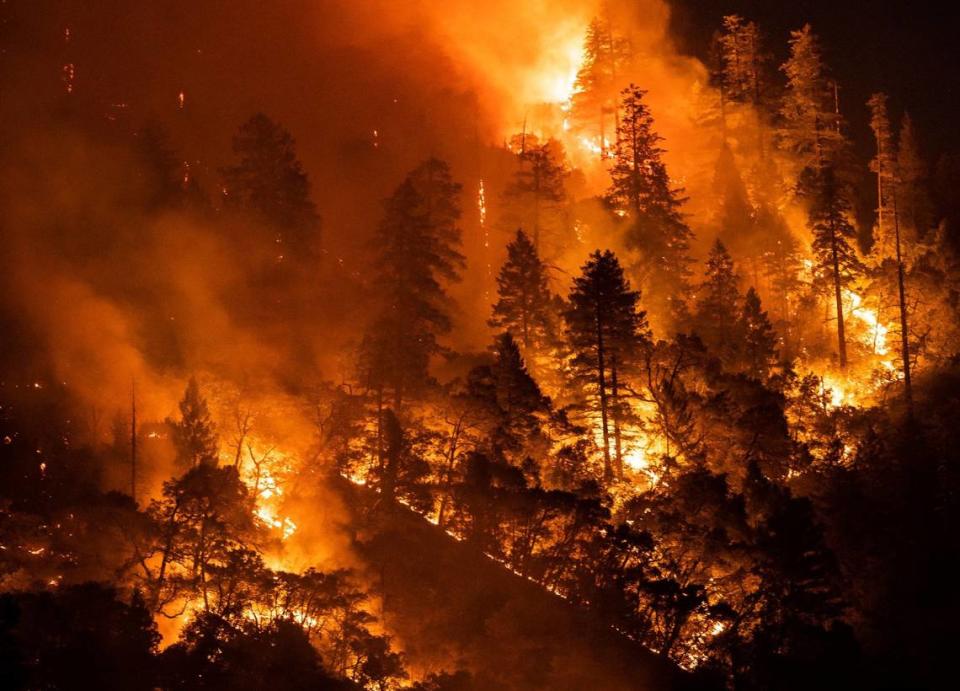Undoing important investments in wildfire prevention would place California in harm’s way | Opinion
Californians have witnessed 15 of the 20 most destructive wildfires in our state’s history in the last decade. What was once known as “fire season” has become a year-round battle against Mother Nature. Although weather patterns have tamed the most recent wildfire seasons over the last two years, heavy precipitation has led to increased “fuel loads” — vegetation in fire-prone forested landscapes. This ticking time bomb is exactly why the California Forestry Association (Calforests) strongly supports forest resilience investments in Gov. Gavin Newsom’s proposed 2024-25 state budget.
We strongly encourage the State Legislature to maintain these levels of investment.
Opinion
Newsom’s proposed 2024-25 budget generally preserves investments to sustain the trajectory that has previously allowed the state to invest $2.8 billion in wildfire resiliency over the last five years, with a significant focus on forest health and wildfire prevention projects. Compared to last year’s $4.2 billion allocation, this budget focuses on funding programs of immediate importance: prevention, suppression and staffing.
In addition, the current proposed budget maintains an investment in the California Department of Forestry and Fire Protection’s (CAL FIRE) wildfire suppression efforts. The Legislature is currently reviewing an additional $198 million to increase CAL FIRE’s capacity to address firefighter mental health and physical welfare.
These investments fund projects like prescribed burns, fuel breaks and other fuel reduction projects that have proven effective at preventing and mitigating catastrophic wildfires. They also fund a system of fuel breaks across the state for more effective fire suppression capabilities.
These investments help CAL FIRE’s dedicated workforce. If we fail to continue making these investments, the state will not be prepared to implement proactive wildfire prevention measures needed to reduce the severity of wildfires, minimize property damage, protect lives and mitigate worsening air quality across the state.
CAL FIRE, the U.S. Forest Service and their private partners are working diligently to reduce hazardous fuel loads. Much of the work that has been implemented by fire-safe councils, resource conservation districts, conservancies and others has been made possible by state-funded grants. But there is still more work that needs to be done — and urgently. For example, we need to construct and link more fuel breaks, which are multi-use tools that slow the spread of fires, provide safe places for firefighters to work from and serve as effective fire retardant drop zones. The cost of implementing and maintaining fuel breaks is a fraction of the cost of post-fire recovery, which makes this investment such sound fiscal policy.
Understanding there are many concerns for residents of our nation’s most populous state, this is one of the few budget items that uniquely affects all Californians, from communities within the wildland-urban interface to those in urban areas. The harmful health impacts resulting from poor air quality and water quality and quantity during and immediately after destructive wildfires affect communities even hundreds of miles from wildfires.
Catastrophic wildfires, like the Valley Fire, CZU Lightening Complex Fires and Camp Fire of 2018, where 85 lives were lost and five firefighters were injured, pose immediate danger to human and animal lives, property and infrastructure. The tragedies are followed by a long period of community recovery efforts, both emotionally and economically. The town of Paradise is still in the trenches of recovery following the destruction of the Camp Fire in 2018.
Without adequate funding, there will not be money to maintain existing fuel treatments and fuel breaks, making it harder to execute suppression activities and placing our communities, forests and firefighters at a higher risk. That is why it is so important for our state leaders to protect the proposed wildfire spending and continue building allocations for wildfire prevention and suppression into the budget.
Matt Dias is the president and CEO of the California Forestry Association.


